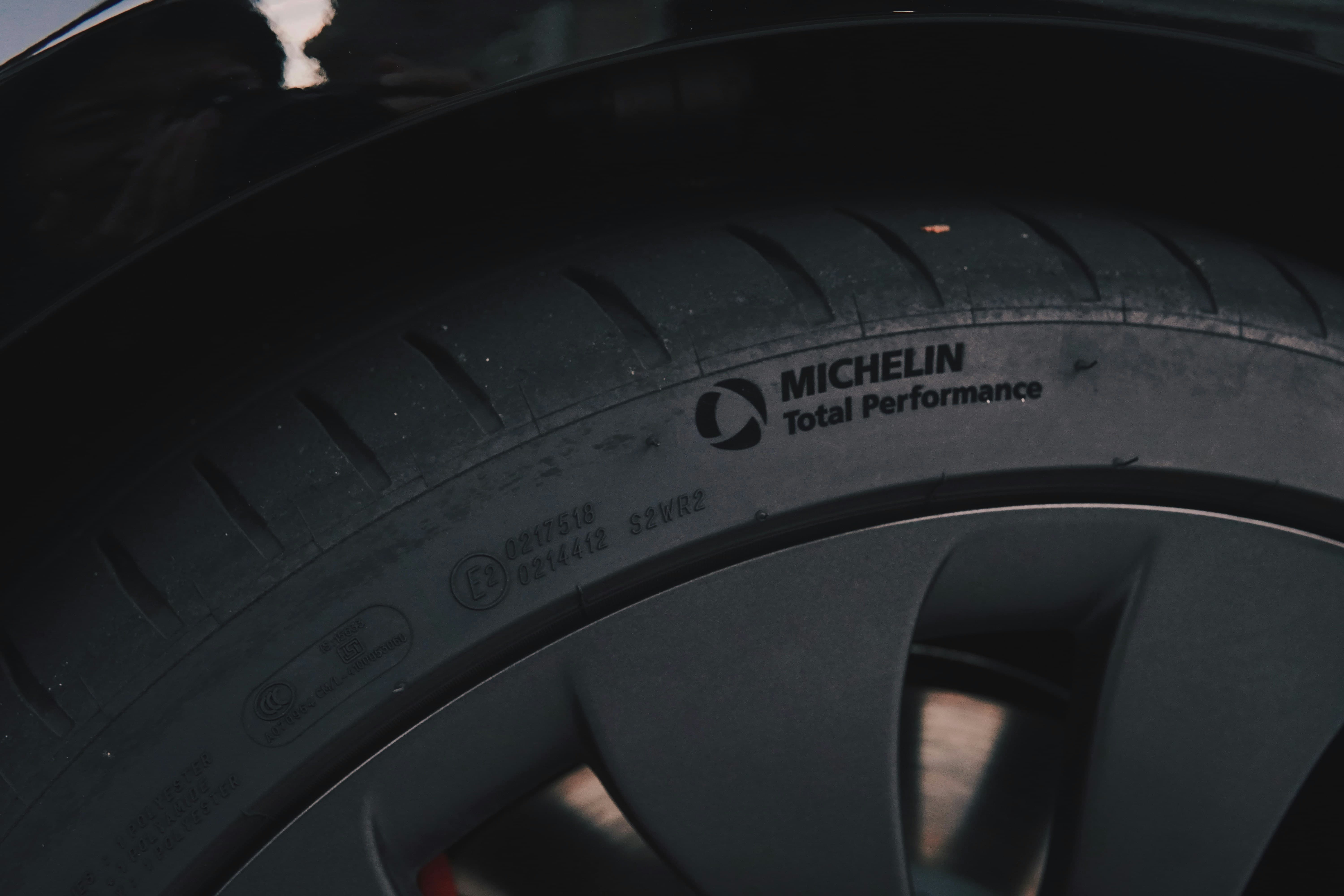All-season tires: When to use them and how to choose

All-season tires: everything you need to know
Selecting suitable tires for your vehicle becomes challenging when you live in a region where seasonal transitions occur without reaching temperatures requiring seasonal tire exchanges. The back-and-forth routine seems unnecessary, so you wonder about alternative solutions. All-season tires represent a practical solution because they have been specifically designed for various weather types. The question remains whether all-season tires would be the most suitable option for your situation. We will examine seasonal tires, beginning with their features and ending with explaining their intended applications and relevant governing rules.
When you need a dependable vehicle for regular driving or plan to embark on a road journey, all-season tires should be considered. Your vehicle needs appropriate tires regardless of your choice of driving conditions. Europcar’s vehicle rental options provide customers with various seasonal vehicles that deliver safe driving experiences.
What exactly are all-season tires?
All-season tires function as the multi-purpose tool equivalent for tire use. The tire attributes from summer and winter models blended in all-season types deliver constant, reliable performance throughout the year. During cold weather, the rubber compound maintains enough flexibility for proper grip but retains strength for hot summer driving conditions. The specific tread pattern design works well in water dispersion, which leads to enhanced stability during wet conditions as well as limited contact in light snow situations.
These tires have a drawback because their versatility prevents them from adapting to seasonal characteristics. The tread depth of winter tires goes deeper than that of all-season tires to grab snowy and icy surfaces, and their rubber substance stays flexible for snow and ice. However, all-season tires have reduced effectiveness in freezing conditions. All-season tires lose their durability more quickly during hot summer temperatures because they lack the same resistance levels as summer tires.
The M+S (Mud and Snow) marking on specific tire models indicates their ability to perform well in light winter conditions. The Three-Peak Mountain Snowflake (3PMSF) symbol on tires ensures real winter performance standards because it signifies strict compliance with winter performance standards.
When do all-season tires make sense?
Every road and driver presents different characteristics. All-season tires become the best choice for people who reside in areas with mild winters and moderate summer conditions and dislike frequent tire exchanges. These tires function optimally under conditions of minimal snowfall and temperatures above freezing and mostly clear roads.
Winter tires maintain adequate traction on icy surfaces and light snow-covered roads yet dedicated winter tires should be preferred by those who need to drive on dangerous icy roads or steep mountain pass conditions. During the summer season all-season tires deliver safe handling and braking performance yet their lifespan gets reduced when exposed to intense high-temperature conditions than dedicated summer tires made for hot weather.
The all-season tire stands as a practical choice for urban drivers because it needs minimal care. The tire type gives reliable performance all year round so people who avoid seasonal tire swapping will find them useful. Calculating between season-specific tires and all-weather alternatives should begin with analyzing how often you need to tackle challenging driving situations since specific tires provide optimal performance in extreme weather conditions and demanding road conditions.
Are all-season tires legally accepted everywhere?
The requirements for tires depend on your location and driving area. The law requires either winter tires throughout winter months or all-season tires with the 3PMSF symbol to be used as an acceptable alternative.
The Loi Montagne of France requires vehicles in specified areas to equip themselves with winter tires or approved all-season tires from November until March. Germany operates under the same regulations by permitting 3PMSF-rated all-season tires instead of winter tires. The Italian government requires appropriate winter tires for specific regions, particularly mountainous zones.
The rules regarding tire requirements in North America function independently within each state and province. The U.S. states have winter tire requirements in severe weather conditions. Quebec province in Canada requires strict enforcement of winter tires from December through March, with no exceptions for regular all-season tires. Certain regions accept only 3PMSF-certified all-season tires as valid vehicle equipment.
Before planning a border crossing trip, you must verify local regulations to confirm that your tires meet the required specifications. Road safety depends on compliance because it protects drivers from fines and unsafe driving conditions.
The pros and cons of all-season tires
The all-season tire provides multiple advantages to different drivers but also carries some limitations in its usage. Learning about all-season tires both pros and cons enables you to set an appropriate tire for driving under different weather conditions.
The benefits of all-season tires
Convenience is the main reason drivers opt for all-season tires. You can maintain one tire set throughout the entire year without needing to change between winter and summer tires during the six-month intervals. Year-round tire use reduces the need for seasonal tire replacements, along with their associated time, effort, and expenses.
These tires demonstrate satisfactory performance because they can handle different driving environments. All-season tires deliver dependable traction on damp roads, dependable control in normal temperatures, and smooth driving performance because they blend different tread patterns effectively. People who reside in regions with mild winter weather and moderate summer heat find all-season tires to be a convenient universal solution.
Another advantage of these tires is their long-term financial benefits. The durability of all-season tires surpasses that of winter tires during dry pavement use, but they experience shorter lifespans than summer tires when exposed to high temperatures. Drivers who prefer saving money instead of buying different tires should consider all-season models as a cost-effective solution.
The downsides of all-season tires
All-season tires should not be your primary tire option when different drivers have various needs. All-season tires suffer from an essential limitation because they perform poorly in harsh weather conditions. Driving in heavy snow along with icy roads and sub-zero temperatures requires winter tires because all-season tires cannot match their safety performance. The rubber material becomes stiff in frigid temperatures, which creates poor traction and longer braking times.
These tires do not function optimally in hot weather conditions. The designed construction of summer tires makes them heat-resistant. Still, high temperatures trigger all-season tires to become excessively soft, thus shortening their tread lifespan and compromising their cornering ability. People who reside in regions with extended hot summer seasons will need to replace their all-season tires more frequently than they expect.
Performance is a vital consideration point. White all-season tires perform adequately in standard road situations. Yet, they fail to reach the handling and stopping capabilities of summer and winter tires during dry roads and freezing conditions, respectively. People driving performance cars or taking frequent highway journeys should choose seasonal tires that match their driving needs.
| The question remains whether you should perform tire rotations on all-season tires.
Yes! Rotating your all-season tires each time you drive 5,000 to 8,000 miles results in equal tire wear, which extends their useful life. An unbalanced tire condition leads to poor performance and reduced traction while driving in wet or icy weather. The practice of tire rotation ensures constant balancing of vehicle control, which enables both safety and smooth driving conditions. |
How to choose the right all-season tires
The specifications of all-season tires exhibit distinct characteristics from each other. The suitability of all-season tires for your vehicle depends on your driving style and environmental elements including climate together with your vehicle type. Several factors should direct your selection process for all-season tires which meet your specific needs.
Check the markings and certifications
Begin the all-season tire selection process by examining the tire markings. The M+S (Mud and Snow) label on standard all-season tires shows they can operate in light winter conditions. When you drive often in cold conditions or when snow becomes a regular occurrence, all-season tires with the Three-Peak Mountain Snowflake (3PMSF) symbol should be your choice. The certification indicates that these tires fulfill enhanced performance requirements for winter conditions.
Consider your driving conditions
Devote thought to your driving locations and methods. Standard all-season tires serve their purpose well when you spend most of your driving time in cities with moderate annual climates. Road trips to mountain terrains require high-performance all-season tires because they outperform standard models on snow and ice alongside heat resistance. All-season tire models provide dependable traction together with brake control during wet and ice conditions without compromising their heat tolerance in hot summer months.
SUV and truck drivers will benefit from all-season touring tires because they deliver better stability and comfort while providing extended tread life. People who seek quick maneuvers with enhanced turning abilities should try performance all-season tires, although these tires tend to shorten their expected lifespan.

Tread design and durability
The functional design of tire treads strongly determines how well a tire performs its intended purposes. Deep-grooved tires with sipes help evacuate water and snow effectively, decreasing hydroplaning risks. Models that use reduced tread patterns combined with minimal noise will deliver superior efficiency and quieter operations to vehicles.
Durability is another key factor. Seek information about UTQG (Uniform Tire Quality Grading) because it provides vital details about treadwear, traction, and temperature resistance ratings. Tire life increases as the treadwear number increases beyond 600, while wet surface grip strength improves when the traction rating reaches A or AA.
Compare brands and reviews
Need help deciding on which brand to pick? Online reviews, together with professional tire assessments, will provide clear information about real-life model performance. Reviews posted online alongside expert tire tests provide valuable insights about the actual performance capabilities of available models. The high-quality all-season tire brands Michelin, Goodyear, Bridgestone, and Continental are widely recognized, but users should base their choices on specific model reviews.
Price is a vital consideration, among other factors. Purchasing reliable, well-rated brands for all-season tires will provide long-term durability and safety benefits, even though budget-friendly options exist.
What to remember?
- People preferring mild winter areas with moderate summer conditions should consider selecting all-season tires since they help avoid seasonal tire changes. These tires simplify the process of switching between winter and summer seasons.
- These tires function well on dry roads, in wet conditions, and light snow, but they are unable to handle severe winter conditions and hot summer temperatures.
- The safer alternative for drivers who experience heavy snow and extreme heat conditions is to maintain separate sets of winter and summer tires.
- The 3PMSF symbol indicates that tires will perform better in winter conditions.
- Effective tire lifespan and security development depend on two critical steps: routine tire rotations and periodic pressure inspections.
- You need a dependable vehicle with suitable tires. Europcar’s car rental service provides perfect vehicles to match your travel needs, whether you’re exploring urban areas, touring mountains, or taking extended road trips.


